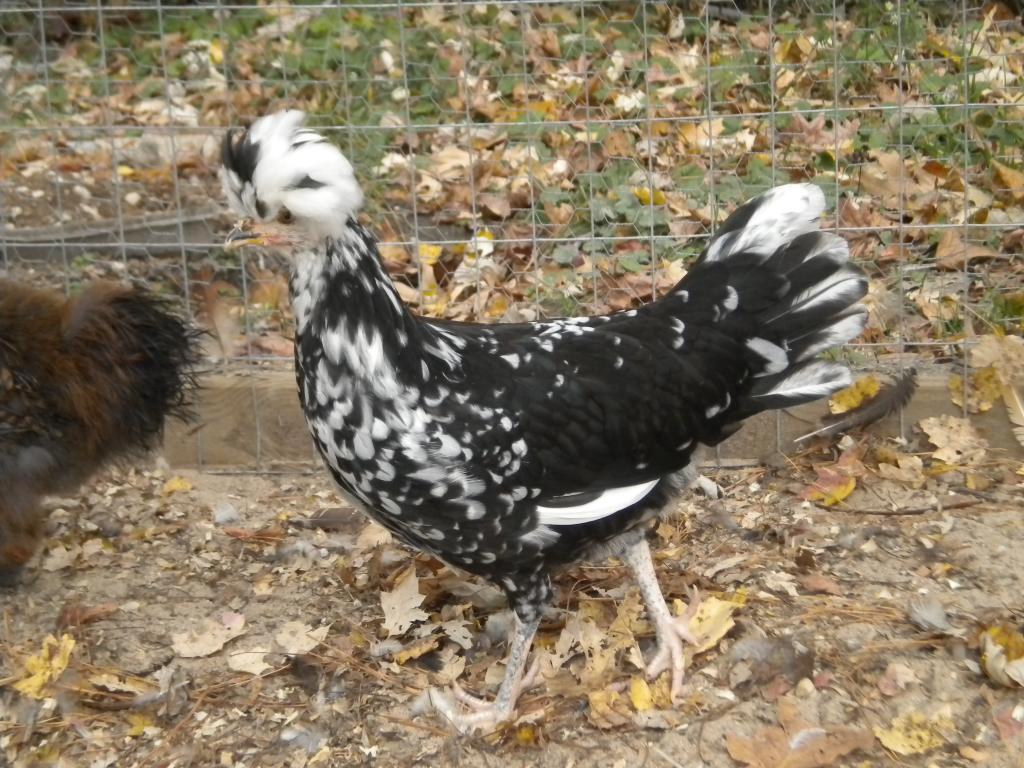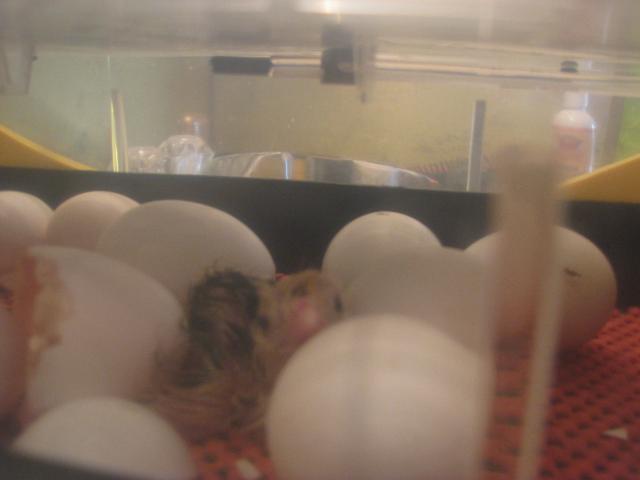Quote:
Mottled breeds do become whiter - "gayer" is the term that's been used to describe this - as they get older. The
Houdan chapter in the Poultry Book (1904, on Google Books) goes so far as to recommend waiting to show or to breed from birds until they are 2 years old or more, when their adult feather color is more or less final... if you want to exhibit birds while they are still pullets, it says, then you will need to breed from adult birds with too much white on them. In short, birds which have perfect Standard mottling at 2 years old will look "too dark" when young... birds which have nice looking mottling when young will grow way too light as they get older.
Perhaps the light mottling in hatchery Houdans today is partly the result of people wanting birds that definitely look mottled in their first year of life, when it is the almost-black pullets + cockerels who will look like "proper" mottled Houdans later on!
There's also the breed history to take into account. When first popularized outside France, the colors were a splashy, even mix of black and white like an exchequer leghorn. It was only through sustained efforts by some rather obsessive British breeders that the color pattern was made darker and more in line with "mottling" seen in other breeds of chicken. Maybe at heart, the Houdan wants its old colors back. ...I mean, maybe it's going to be an uphill battle against natural genetic variation, to get and to keep the breed "extra dark".
Accessing Google Books can be a pain in the a** - if you have a slower connection or just don't like dealing with the interface. It is totally worth it though, to get to a long chapter all about the Mottled Houdan in America and loaded with advice and pictures. Here are just a few lifted from it, hopefully the images aren't too large:
Example of a dark colored pullet, photographed by the article's author, Rev. C.E. Petersen of Maine. Caption reads
A HOUDAN PULLET - too dark for exhibition, but which will molt into a standard colored hen
Example of a lighter colored pullet, one of the author's.
HOUDAN PULLET, "BONNIE LASS". First, Boston, 1900, and winner of many other prizes
Another of Mr. Petersen's photos, unsure if this is his bird as well - probably.
FIRST BOSTON HOUDAN COCK, 1902
Another prize winning cock, Mr. Petersen's, nice frontal photo showing massive build:
HOUDAN COCK, THE CHAMPION CHALLENGE CUP WINNER AT BOSTON, 1903 - Bred and owned by C.E. Peterson, Maine. Pronounced by expert judges to be the best Houdan male shown in America. A great grandson of the noted sire, "Danbury"
Illustration by Harrison Weir, author of the original English edition of the Poultry Book, "Our Poultry".
PRIZE HOUDAN COCKEREL, 1897 - The English type, and the butterfly comb, not bred in America
I like to look at these photos most of all as a guide for how the body should be shaped... because I think that by this time, crests on prize birds had gotten a little too full and started to get in the birds' way. Notice how you cannot see eyes in any of the above photo etchings... though that might be harder in the first place because everything is in black and white.
The Poultry Book also includes an illustration from the 1860s showing a cosmetically "unimproved" Houdan:
HOUDAN MALE AS IT LOOKED WHEN FIRST IMPORTED INTO THIS COUNTRY, IN THE SIXTIES - An unpardonable crest nowadays, but still seen. From an old woodcut, by permission
And we still see Houdans which look like this today! Right down to the big eyes and "who, me?" expression. Genuine Houdan, just not to standard.
ETA: added a couple more pictures & remarks...


































